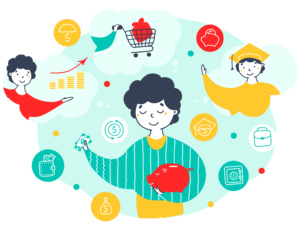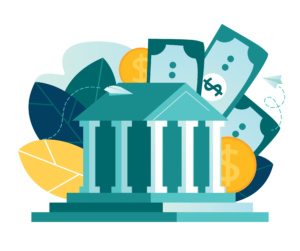Teaching Financial Responsibility to Kids
Article courtesy of | ANB
From the first time you dropped a quarter in a piggy bank to the day you opened your first checking account, you’ve been steadily developing financial habits. But were they good habits? That’s not just a question for adults to ask themselves, but also for parents to ask about their children. Children are always watching and always learning. Good financial habits tend to develop from intentional conversations and opportunities. Bad habits seem to develop on their own.
That’s why ANB works hard to give parents plenty of opportunities to help their children learn basic financial literacy, says Lizzie W. Williams, community development director for the family-owned bank. She grew up in a banking family herself. “In our family, the first thing we learned was the value of a dollar,” she says. “We had piggy banks, and then we turned those into a savings account we would contribute to ourselves.”
Now a parent herself, Williams says her 12-year-old twin daughters are learning the same basic cost-of-living lessons. But thanks to ANB’s Student Plastic Account, their early financial literacy is even more advanced than that of her own childhood. Williams grew up with a piggy bank and a passport savings book. Her daughters have their own Plastic debit cards.
“They love the freedom of having their own card,” Williams says of the Visa Check Card that accompanies a Plastic account. “They love being able to grab something at Chick-fil-A or buy a new piece of jewelry for themselves.”
But when a student opens his or her first Plastic account, they don’t just get a cool debit card that works in ATMs. They also gain valuable experience and a safe way to learn basic money management.
Parents can help their kids open a Plastic account at ANB with a $20 minimum deposit. With no daily minimum balance requirements, Plastic accounts work just like adult checking accounts, with one major bonus: the bank rewards students for good grades. “If you get all As and Bs, bring your report card into the bank every six weeks and we’ll pay you up to $10—up to $60 per year,” Williams says.
Even better, both kids and parents have access to a Plastic account. “I love that from a parenting standpoint because I have a spender and a saver,” she says of her twins. Transaction notifications by text or email are available to everyone connected to the account. “I can watch what’s going on and help my girls get that sense of keeping control. As a parent, the best part is that they start learning responsibility—what comes in has to be more than what goes out.”
When a Plastic account holder turns 18, their account transitions to a regular checking account at ANB, but Williams says the lessons of Plastic tend to stick around. “When we explain that you want to buy $100 AirPods but you only have $30 in your account, that makes sense to them,” she says of her daughters. They can see their balance on the ANB app, just like Mom and Dad. “They pay attention. It helps them understand there’s no one else to pay that for you, so they start to learn the skills to save.”
Beyond that benefit, Plastic account holders are slowly building a relationship with a bank like ANB. As they grow older, that familiarity pays off. Former Plastic customers have turned to ANB for their first car loans and first mortgages. “They build a solid financial base and end up becoming good customers. That’s good for them and good for us, too,” says Williams.
Responsible money management starts young, and the convenience of Plastic is clear for parents and kids alike. To apply for a Plastic account, visit ANB.com.


